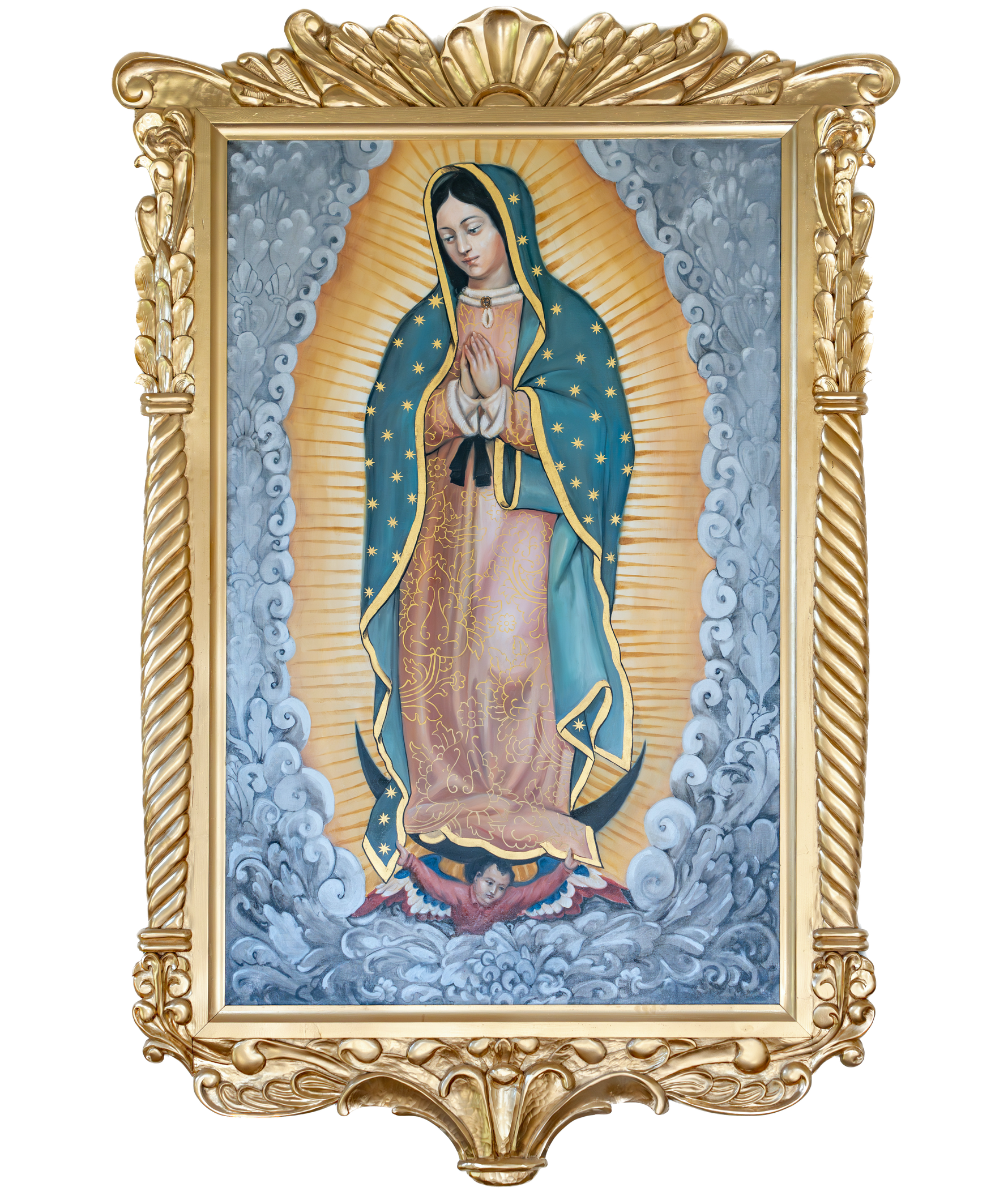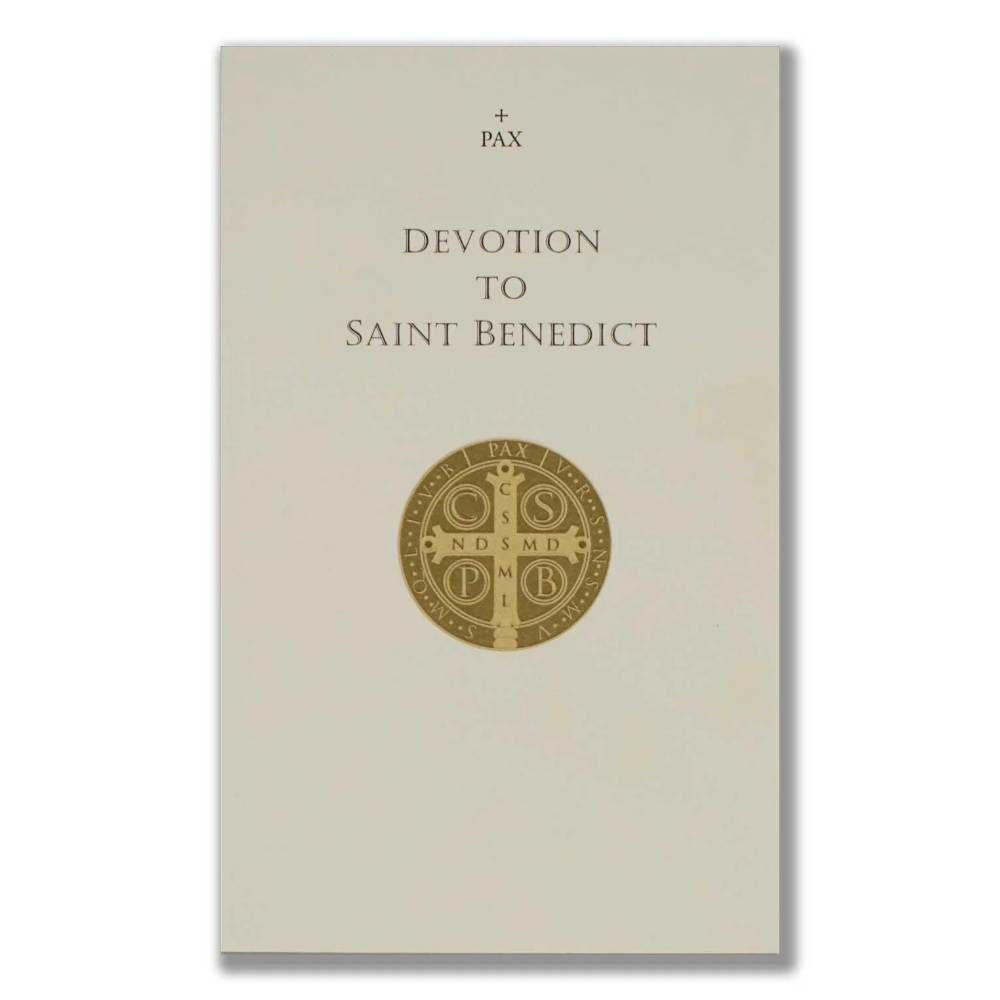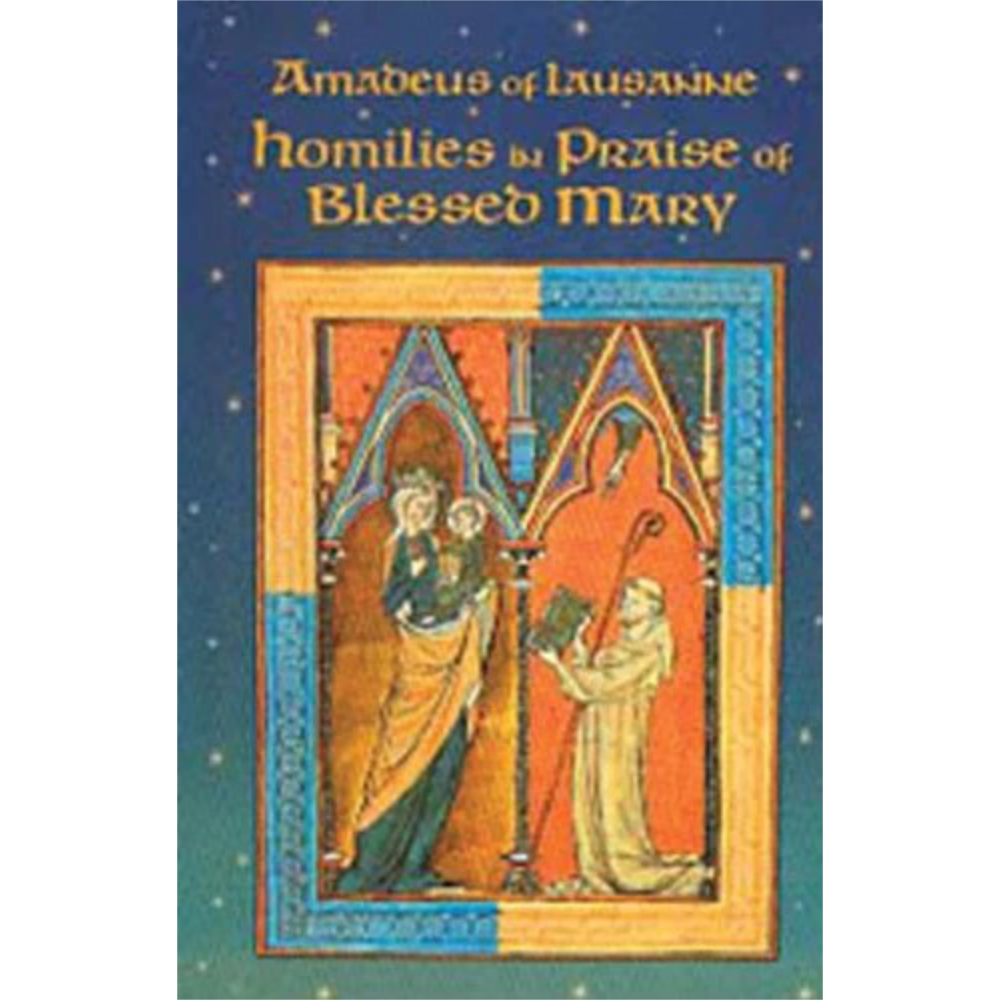Sort by:
16 of 84 products
16 of 84 products
The Monastic Diurnal or the Day Hours of the Monastic Breviary (8th edition)
A republication of the 1963 edition of the Benedictine hours of Prime, Lauds, Terce, Sext, None, Vespers, and Compline, in Latin and English in parallel columns for all the feasts and seasons in the traditional Benedictine calendar, with an updated table of movable feasts and a Benedictus/Magnificat card. The Latin text is the traditional Vulgate Psalter. Ideal for novices, monks, and nuns when traveling, Benedictine oblates, guests at monasteries, and all who wish to draw upon the riches of the ancient and traditional Benedictine office. Printed in black and red throughout and bound in real Moroccan leather with a flexible cover, gilt edges, and six marker ribbons, this is a truly beautiful book.
The new 8th edition shares the same texts as the preceding ones, but is printed on thinner paper, significantly reducing the volume's thickness.
- Printed at St Michale's Abbey Press, England.
The Life of Saint Benedict: The Great Patriarch of the Western Monks (480-547 A.D.)
The famous, classic life of St. Benedict, written by Pope St. Gregory the Great, is filled with miracles, holy stories, and inspiring idealism. It is delightful reading for all ages and describes much of what is known about St. Benedict, including the founding of the Benedictine order.
Dom Gabriel Sortais: An Amazing Abbot in Turbulent Times is an engaging biography of one of the most colorful Abbot Generals among the Trappists. Dom Gabriel put his stamp on the order in a very personal way, a form that remains with us today despite his best efforts to bring the Order up to date. His tragic death during the course of Vatican Two impeded the implementation of his vision for the whole Order. Dom Guy Oury, a Benedictine monk of Solesmes, has written the story with remarkable clarity. As much as possible, Fr. Oury works from the primary sources, which include witnesses and documents from the Abbey of Bellefontaine in France, where he was a monk and later abbot before being elected Abbot General of the order, as well as the archives of the Generalate in Rome. This book offers insight into the lives of the Trappists during the troubled times of World War II and also throughout the changes of Vatican Two.
Fr. Guy Oury, OSB, was asked by Dom Emmanuel Coutant, the Abbot of Bellefontaine, to write the biography of his predecessor, Dom Gabriel Sortais. He was given all the papers in the archives at Bellefontaine that were gathered together following Dom Gabriel's death. There is an admirable objectivity in the present biography, which was ably translated into English by Br. Brian Kerns of the Abbey of the Genesee, near Piffard, New York. The Afterword by Fr. Laurence Bourget of St. Joseph's Abbey, Spencer, Massachusettes, demonstrates an appreciation by a monk who worked closely with Dom Gabriel Sortais during the last years of his life. Fr. Guy Oury himself died on November 2, 2000, at the age of 71.
The present treatise on prayer was first of all printed privately in the French language, and was intended exclusively for the instruction of the daughters of St Benedict. All souls, however, who are aiming at perfection may derive profit and edification from its pages. The spirit of the venerable Abbot Gueranger breathes through the whole work. What this distinguished man thought on the all-important subject of prayer, what he expressed in his conferences, and what he wrote in many parts of his classical work, "The Liturgical Year," is found here systematically arranged. Some of the chapters are real masterpieces.
-Mgr. Paul Leopold Haffner, Bishop of Mayence, September 10, 1896."
Spiritual Life and Prayer according to the Monastic Tradition, is a spiritual treatise on the soul's journey to God. Carefully considering the spiritual life as lived among the trials of the world, the Sacraments, the author considers who are the true worshipers of God and how we become such based on the testimony of Sacred Tradition and the Holy Fathers. Though it is a century old, being based on such timeless testimony it has not lost its luster.
Rule of St. Benedict in English and Latin (side by side)
"Remarkable for its discretion and its clarity." - St. Gregory the Great.
It was 594 when Pope St. Gregory the Great - himself a Benedictine - wrote this tribute to the little book which had shaped his life, and stands today as one of the cornerstones of religious life.
St. Benedict - credited with saving Western Civilization through his monastery system - adopted a remarkably common approach to growing in grace.
In part, St. Benedict was reacting to the extreme ascetical practices of the East where hermits starved themselves, went without sleep, and dressed in rags. Without minimizing the importance of that self-sacrifice, St. Benedict insisted that monks could not attend properly to their work and study, let alone their celebration of Mass and the Divine Office, if they were denied nutritious meals, ample rest, proper clothing - and daily structure.
The Benedictine historian, Dom David Knowles, wrote that in the Rule, St. Benedict created a new type of monastery, one that was "neither a penitentiary nor a school of ascetic mountaineering, but a family, a home for those seeking God."
If Benedict was comparatively lenient about disciplining the body, he was adamant about the need to subdue the will. His Rule emphasizes:• obedience • humility • fraternal charity • These virtues, once acquired, root out pride. Then, to the standard vows of poverty, chastity, and obedience, St. Benedict added the vow of stability, in which a monk promised to remain in his monastery until death (unless his superiors sent him elsewhere). By this fourth vow, Benedict made each monastery a brotherhood, a family, in which each member works for the good of the whole.
Furthermore, each member of the monastic family found in the Rule a standard against which he could measure his every action. By being moderate and flexible in day-to-day concerns, but uncompromising in spiritual matters, St. Benedict's Rule has endured for 1,500 years as a living code, a guiding light that has shown untold numbers of religious men and women the path to holiness. No rectory, no religious house, and no Catholic family, should be without a copy of this seminal work.
Translated & Edited by - Abbot Justin McCann, O.S.B.
Paperback
Mary Fabyan Windeatt presents the powerful story of the famous life and miracles of St. Benedict for the Vision Book series of saints for youth. Known as the Father of Western Monasticism, St. Benedict played a major role in the Christianization and civilization of post-Roman Europe in the sixth century.
Having lived in an era of great immorality and vice, Benedict founded an order for monks whose strong life of prayer and work helped convert the godless society around them. It tells how his Benedictine order of monks spread throughout Europe and the New World. The heroic life of his sister St. Scholastica, his saving a boy from drowning, raising one from the dead, and the story of poisoned wine are all told in this exciting, dramatic tale of a great saint. Illustrated.
A new edition of a treasured contemplative classic. The author takes readers on a journey based on biblical themes and urges them to seek a personal inner hermitage in which to seek and to reach God. 'Not everyone, obviously, can and should live as a monk or hermit. But no Christian can do without an inner hermitage in which to meet his God.
Calm and spirituality—the true hallmarks of Carthusian writings—distinguish this book. The first part sets out the principles of the interior life; the second works out a method of prayer. There follow eleven sermons, originally given to monks in the chapter, which illustrate this approach. The final portion discusses the complex doctrine of the Trinity with extraordinary clarity. Broken into short chapters, the book is designed for personal reflection and meditation.
Author: A Carthusian
Those seeking to deepen their spiritual lives by visiting monasteries rarely have enough time to absorb as much as they would like. In this book, an experienced spiritual master provides an intensive directed retreat that relies heavily on the rich Cistercian spiritual tradition. Readers may read and digest at their own pace, savoring the author's contagious enthusiasm for the monastic way and the medieval monks who formed this distinctive contemplative tradition.
The Commentary on the Rule takes into account the long history of commentary on St. Benedict's rule and discusses this history at length in the introduction. Each chapter has a selection of the rule, following the divisions of dates on which sections of the rule are read in monasteries, then a commentary on that section, followed by an application. The commentary makes use of the very lengthy Monastic Tradition, works of the Church Fathers, Eastern Monasticism, the Scholastics, and others, as well as commentary on text criticism in regards to the original Latin of the rule itself.
This wonderful text, though it is intended for Benedictine Oblates, is a worthy resource for anyone who would like to know more about the rule of St. Benedict. It is also available in hardcover.
Educated at the abbeys of Bonnevaux and Cluny and at the court of his kinsman, Conrad of Hohenstaufen, Amadeus became a monk of Clairvaux in 1125, just about the time its abbot, Bernard, began to be noticed by the Church at large. After twenty years in the cloister, Amadeus became bishop of the troubled diocese of Lausanne. Reform and renewal did not come easily. In one of his letters, he tells how his vestments once ran red with the blood of a man murdered while the bishop tried unsuccessfully to protect him.
- Choosing a selection results in a full page refresh.
- Opens in a new window.























